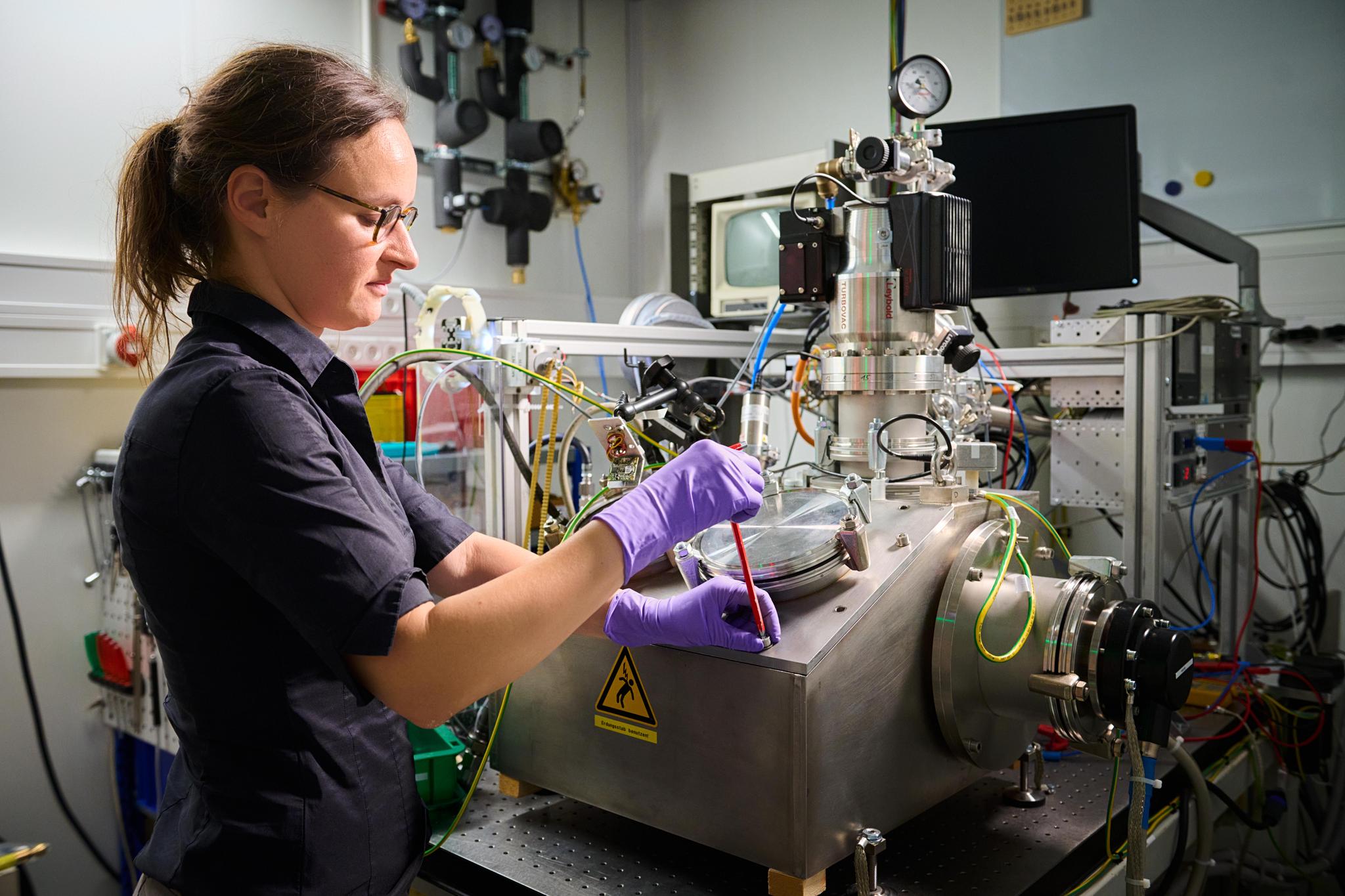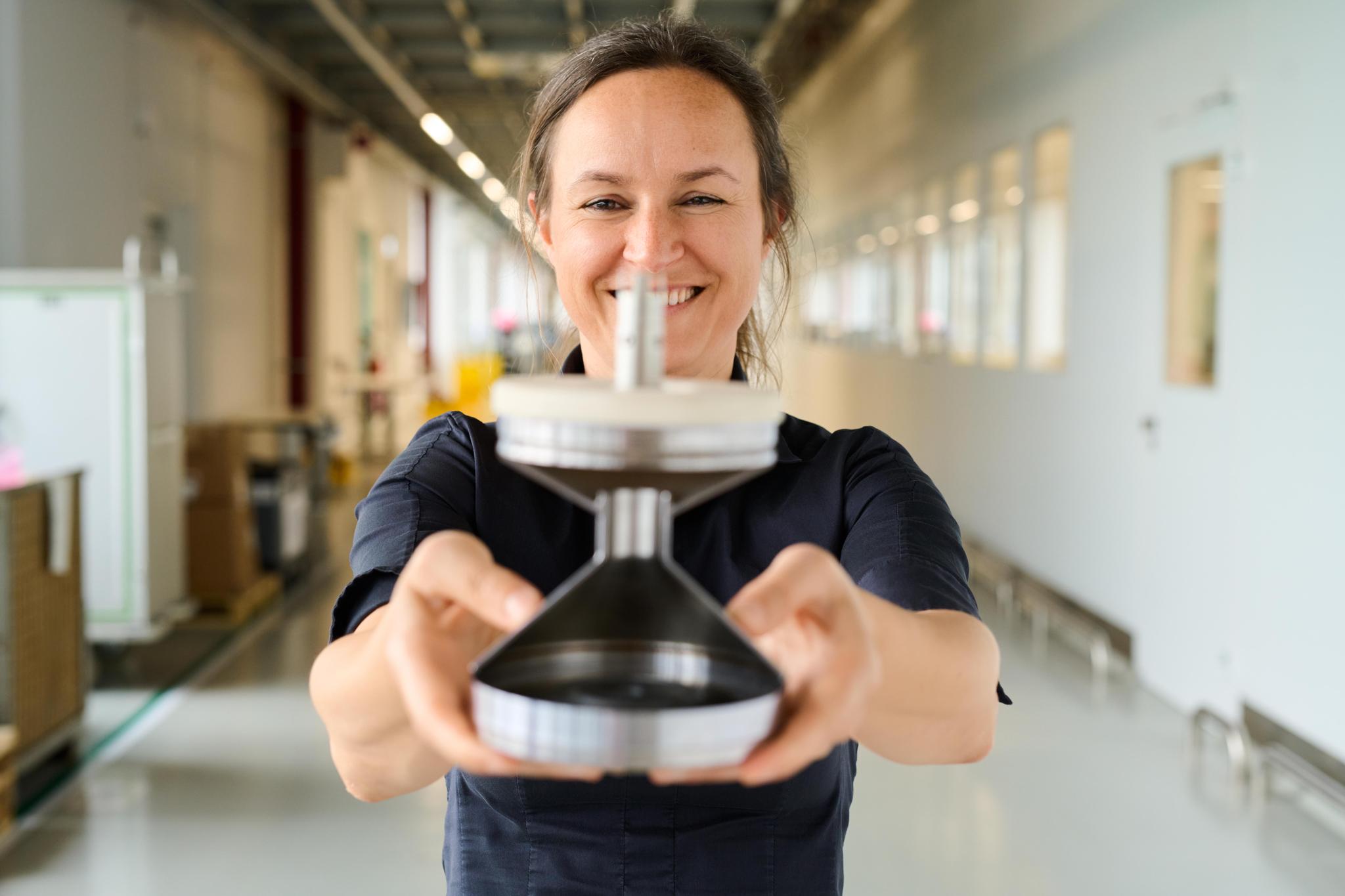Many talented women at Siemens Healthineers are working to pioneer breakthroughs in healthcare and shape the future of the industry.
One of these creative minds is physicist Anja Fritzler PhD, who is a principal key expert researching the next generation of X-ray tubes.
The X-ray tube is the heart of many medical devices and is the origin of Siemens Healthineers innovation story in medtech. Anja and her team are pushing its limits to deliver better outcomes for patients worldwide.
It has been 130 years since X-ray technology was first developed, and it is still being developed today.
Siemens Healthineers digital editor and content creator, Katja Gäbelein, speaks with Anja about this fascinating and important topic.
Conducting fundamental research
With the tube being at the heart of X-ray technology, Anja and her five-person team in the Power & Vacuum Products department conduct fundamental research on the subject.
The team, which is based in her laboratory at the cutting-edge High-Energy Photonics (HEP) Center in Forchheim in northern Bavaria in Germany, develops entirely new X-ray tubes and optimizes existing tubes used in medical devices from Siemens Healthineers.
“I always have my best ideas right before I fall asleep. Perhaps because my mind is completely clear then," says Anja.
Focusing her career on X-ray tubes

Anja's whole career revolves around X-ray tubes. They were even the main focus of her final project for her physics degree. It was while working on this project that she first came into contact with the Innovation department at Siemens Healthineers, which later funded part of her PhD.
Anja's career path at Siemens Healthineers has included four years in Wuxi, China, where she headed up a small team and worked in the X-ray tube production department and the X-ray tube research and development department. Anja moved to the Innovation department at Power & Vacuum Products in 2014 to work as a simulation engineer and became team leader in 2019. Today she has both physicists and power electronics and design engineers working in her multidisciplinary team.
"A physicist is something in between a scientific artist and an engineer," explains Anja.
Offering great opportunities for development
Katja writes how it would be a mistake to assume X-ray tubes feature only in traditional X-ray systems. They also serve as the X-ray source that forms an essential part of numerous other medical devices.
"The deeper you dig into the subject, the more it becomes clear why Anja describes the field of X-ray tubes as “a giant playground” for physicists: She sees the tube as representing a fascinating interface of different physical principles and challenges that are ripe for experimentation and optimization. The anode design alone offers innumerable opportunities for research and further development," adds Katja.
Pursuing ongoing innovation
In her role as a principal key expert, Anja leads the Next Generation Tube Technology (NGTT) project, which Siemens Healthineers has set up to pursue the ongoing innovation and improvement of X-ray tubes: “The project helps ensure we are taking the technology forward continuously,” says Anja. All research in this area has the objective of continuously improving image quality in medical imaging for patients and medical personnel, writes Katja. Minimizing radiation exposure is also a top priority.
So what are some of the challenges faced in developing X-ray tubes?
“Extrafocal radiation is an issue, including in relation to the development of rotating anode tubes for rotating envelope systems, which are used in applications such as CT scanners,” explains Anja.
Extrafocal radiation is an unwanted form of X-ray radiation, a type of scatter that originates outside the anode focal spot. The focal spot is the point at which the electron beam is intended to strike the anode and generate the required X-rays. However, some of the electrons emitted from the cathode are scattered at the focal spot and go on to strike other parts of the anode or tube housing, where they produce extrafocal radiation in the form of bremsstrahlung, or “braking radiation.”
Because the extrafocal radiation does not come from the defined focal spot, it gives rise to spurious image information that can cause “smearing” - blurring and reduced contrast - of the medical image, Anja explains. It also adds to the total radiation dose to which the patient is exposed, without providing any diagnostic benefit.
Anja and her team have been investigating special anode structures to reduce off-focus radiation. Although these structures on the anode are microscopic, just micrometers in size, they are able to change the path of electrons at the focal spot and help to redirect them more systematically. This reduces the unwanted off-focus radiation and increases the photon yield per electron. The resulting improvement in image quality could subsequently help to facilitate more accurate diagnoses and better treatment, thereby benefiting both patients and medical personnel.
Anja and her team have been developing the idea of the structured anode in close collaboration with Product Development. The technology has now reached level four maturity, which means it will shortly be ready for use in actual products.
Working to improve sustainability

Sustainability presents another significant challenge in X-ray tube development. Anja and the team are researching techniques for joining glass and metal in a way that will allow them to be separated again later on. The conventional method, which essentially amounts to fusing the metal into the glass, cannot be reversed, preventing these valuable materials from being reused.
The researchers are also investigating ways to minimize the use of rare materials such as cobalt in X-ray tubes. Progress here not only helps to conserve scarce resources, but also saves money, which is a significant consideration when a single X-ray tube can cost tens of thousands of euros (depending on size, design, and the combination of materials).
The field of X-ray tubes still harbors very substantial potential for further development, says Anja. One of the areas in which she anticipates exciting future research is X-ray fluorescent imaging, a technology that effectively makes chemical elements visible by measuring their specific fluorescence under X-ray radiation.
Applications for X-ray fluorescent imaging technology include rendering tumors visible by using special nanoparticles as markers. The nanoparticles bind to the target structures in the body and begin to fluoresce under X-ray radiation. The advantages of X-ray fluorescent imaging, Anja explains, include interesting possibilities for observing processes as they happen. For example, tumor cells or pharmaceuticals can be monitored directly in the living organism, yielding profound insights into their spread and accumulation.
Working as a modern artist
In her leisure time, Anja very much enjoys painting. “My art teacher at school even tried to persuade me to study art,” recalls Anja who decided to go with physics instead, and today, 130 years on from the invention of the first X-ray tube, works as a modern artist in the field of X-ray tube innovation.
Consider joining the many talented women, like Anja, working at Siemens Healthineers and who are making valuable contributions and breakthroughs that truly matter.
Siemens Healthineers makes an excellent career choice
Looking for a thrilling and supported career where impact is assured?
Research the latest job vacancies with Siemens Healthineers and apply for an impactful role.
Search jobs
Disclosure: Where Women Work researches and publishes insightful evidence about how its paid member organizations support women's equality.